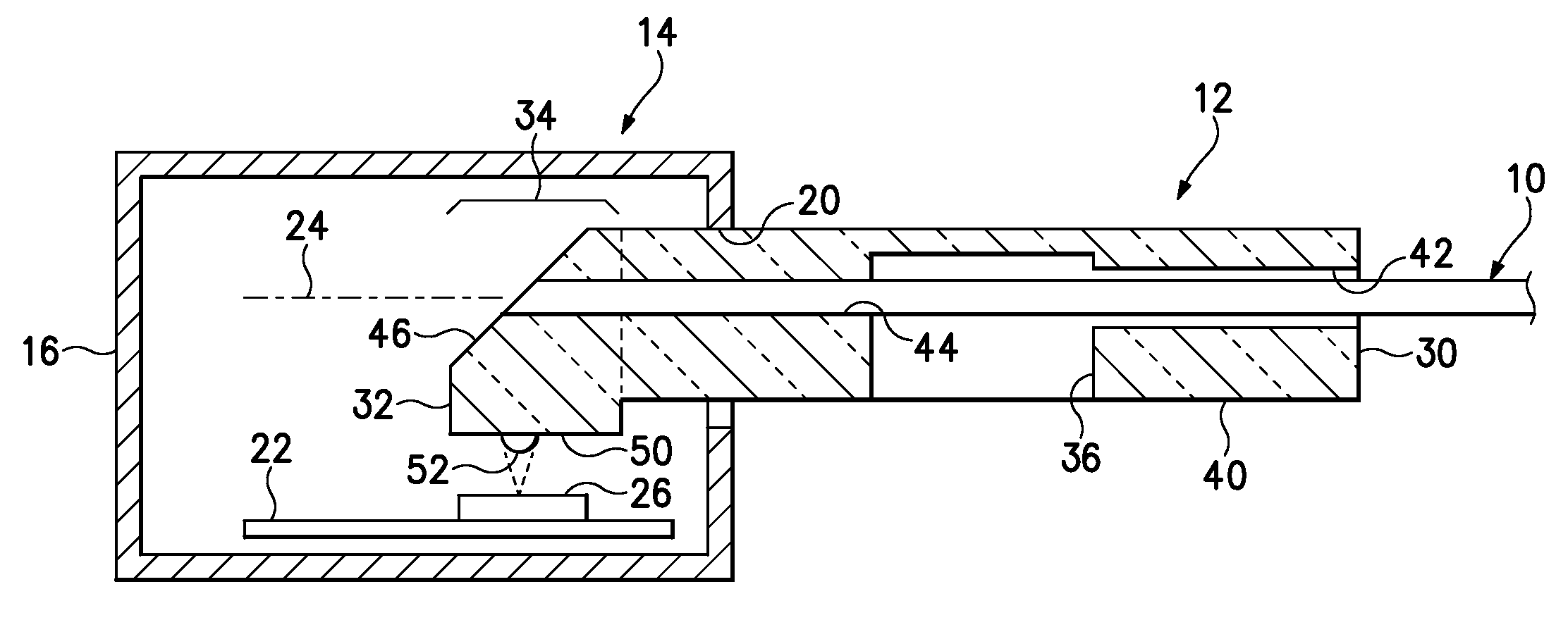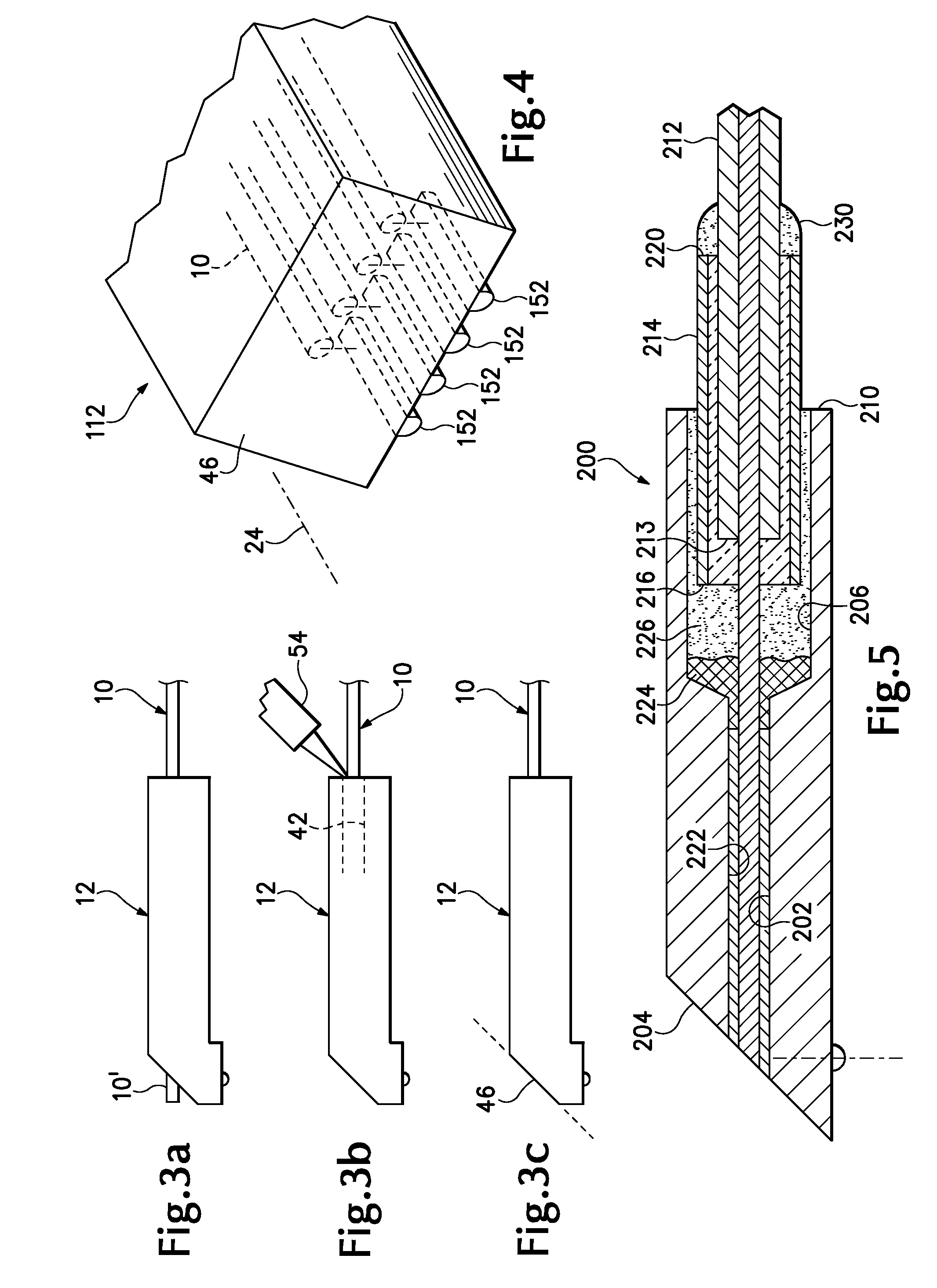Termination for optic fiber
a technology of optic fiber and terminal elements, applied in the direction of optics, instruments, optical light guides, etc., can solve the problems of difficult miniaturization of fiber optic terminal elements, a significant challenge for fiber optic termination, and bulky typical hermetically sealed components
- Summary
- Abstract
- Description
- Claims
- Application Information
AI Technical Summary
Benefits of technology
Problems solved by technology
Method used
Image
Examples
Embodiment Construction
[0011]FIG. 1 shows an optical fiber cable 10 with a terminal element 12 connected for interfacing with an electronic instrument or communications module 14. The fiber optic cable has four multi-mode optical fibers that extend some distance to a remote communications device (not shown) that is sending and / or receiving signals or data to or from the module 14. In alternative embodiments the fibers may be single-mode or any other type, and may be used in a bundle of any number of fibers, or with a single fiber.
[0012]The module 14 may be any type of electronics or communications instrument or component thereof that requires communication with a remote external device. The module may be used for a telecom local station, or other communications or relay stations used for Internet or other computer networks, including networks found on vehicles such as automobiles and aircraft. The embodiment is well-suited for applications where harsh environmental conditions are experienced, and where hi...
PUM
 Login to View More
Login to View More Abstract
Description
Claims
Application Information
 Login to View More
Login to View More - R&D
- Intellectual Property
- Life Sciences
- Materials
- Tech Scout
- Unparalleled Data Quality
- Higher Quality Content
- 60% Fewer Hallucinations
Browse by: Latest US Patents, China's latest patents, Technical Efficacy Thesaurus, Application Domain, Technology Topic, Popular Technical Reports.
© 2025 PatSnap. All rights reserved.Legal|Privacy policy|Modern Slavery Act Transparency Statement|Sitemap|About US| Contact US: help@patsnap.com



